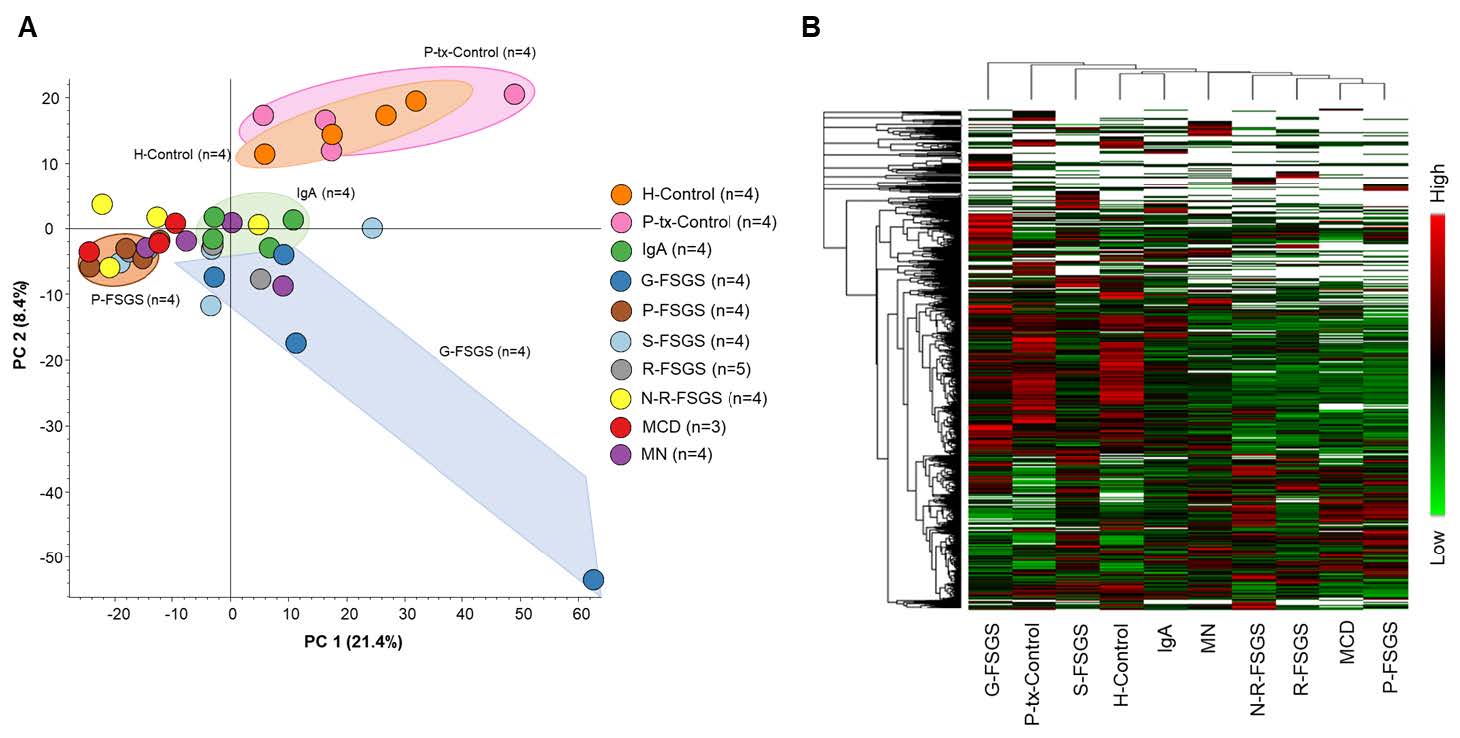Proteome Profiling of Recurrent Primary Focal Segmental Glomerulosclerosis (FSGS) Plasma Samples Reveals Potential Proteins Involved in Primary FSGS
1Northwestern Univ NMFF, Chicago, IL, 2Mass Spectrometry, Proteomics and Metabolomics Core Facility, Department of Chemistry and Biochemistry, The University of Oklahoma, Oklahoma, OK, 3University of Maryland, Baltimore, MD
Meeting: 2022 American Transplant Congress
Abstract number: 499
Keywords: Kidney, Proteinuria, Recurrence
Topic: Clinical Science » Kidney » 49 - Recurrent Kidney Disease & Genetics
Session Information
Session Name: Recurrent Kidney Disease & Genetics
Session Type: Rapid Fire Oral Abstract
Date: Tuesday, June 7, 2022
Session Time: 5:30pm-7:00pm
 Presentation Time: 5:30pm-5:40pm
Presentation Time: 5:30pm-5:40pm
Location: Hynes Room 310
*Purpose: The presumed etiology of primary FSGS is a plasma factor that results in general podocyte dysfunction with partial and/or unpredictable response to immunosuppressive therapy and risk of recurrence after transplantation. Several candidates for the circulating factor(s) have been proposed but controversy exists in the field for lack of reproducible results. Here we systematically studied the proteomic profile of plasma from patients with recurrent FSGS and compared it to multiple plasma controls from patients with different glomerulonephritis.
*Methods: We collected 40 plasma samples from 10 different groups: Primary FSGS, native kidney (P-FSGS, n=4); Secondary FSGS, native and kidney transplants (S-FSGS, n=4); IgA nephropathy, native kidneys (IgA, n=4); Minimal Change disease, native kidneys (MCD, n=4); Membranous Nephropathy, native kidneys (MN, n=4); Genetic FSGS, native kidneys (G-FSGS, n=4); Recurrent FSGS, post-renal transplant (R-FSGS, n=4); non-recurrent FSGS, post-renal transplant (N-R-FSGS, n=4); Post-Transplant controls (P-tx-control, n=4); healthy controls (H-control, n=4). All glomerulonephritis were biopsied proven. Label-free quantitative analysis was performed to compare the proteomic profiles of each condition.
*Results: A total of 8067 unique peptides corresponding to 2109 unique protein groups were identified and quantified. A principal component analysis (PCA) of total protein showed close clustering of the replicates for each group suggesting the reproducibility among biological replicates of each group (Figure 1A). However, a significant difference was observed among the groups. Similarly, heat map clustering of the protein abundance further demonstrates the differential abundance of the identified proteins in each group (Figure 1B). Furthermore, the label-free quantitative proteomic analysis revealed the differences among groups with potential marker proteins (data not shown for space limitation).
*Conclusions: This comprehensive comparative label-free proteomic analysis facilitates the identification of a list of potential proteins that could be responsible and/or involved in primary FSGS disease pathways.
To cite this abstract in AMA style:
Gallon L, Ahsan N, Mas V, Leventhal J, Fornelli L. Proteome Profiling of Recurrent Primary Focal Segmental Glomerulosclerosis (FSGS) Plasma Samples Reveals Potential Proteins Involved in Primary FSGS [abstract]. Am J Transplant. 2022; 22 (suppl 3). https://atcmeetingabstracts.com/abstract/proteome-profiling-of-recurrent-primary-focal-segmental-glomerulosclerosis-fsgs-plasma-samples-reveals-potential-proteins-involved-in-primary-fsgs/. Accessed December 31, 2025.« Back to 2022 American Transplant Congress

